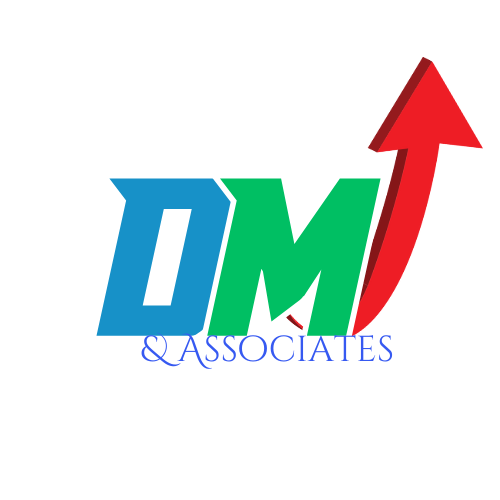Tax planning is essential for small businesses, especially as 2025 approaches. With changing tax laws and regulations, it’s crucial for business owners to adapt their tax strategies to minimize liabilities and maximize savings. Effective tax planning strategies can help your small business stay financially healthy and grow in the coming year. In this blog, we will explore some of the top tax planning strategies for small businesses in 2025.

Why Tax Planning is Important for Small Businesses
Before diving into specific strategies, it’s important to understand why tax planning should be a priority for small businesses. Good tax planning helps businesses minimize tax liabilities, avoid penalties, and ensure compliance with federal, state, and local tax regulations. By implementing the right tax planning strategies, businesses can retain more profits, reinvest in growth, and improve cash flow management.
In 2025, several tax changes are expected that could impact small businesses, making it more important than ever to stay ahead with proper planning. Here are some of the most effective tax planning strategies for small businesses in 2025.
1. Take Advantage of Section 179 Deductions
One of the most beneficial tax planning strategies for small businesses is to leverage Section 179 deductions. This provision allows businesses to deduct the cost of qualifying property, equipment, and software purchased or financed during the tax year. In 2025, the Section 179 limit is expected to increase, meaning small businesses can write off more of their capital expenditures. This strategy can significantly reduce your taxable income and lower your tax bill.
How to Maximize Section 179 Deductions
- Invest in business equipment and machinery before the end of the year to maximize deductions.
- Ensure that the property purchased is eligible for Section 179, including computers, office furniture, and machinery.
- Work with your accountant to calculate the maximum allowable deduction for your business.
2. Contribute to Retirement Plans
Retirement plan contributions are not only important for your personal future but also offer valuable tax savings for your business. In 2025, business owners should focus on contributing to retirement plans like SEP IRAs, SIMPLE IRAs, and 401(k) plans. These contributions are tax-deductible, reducing your business’s taxable income.
Types of Retirement Plans to Consider
- SEP IRAs: These plans allow higher contribution limits, which is especially beneficial for business owners and self-employed individuals.
- SIMPLE IRAs: This plan is ideal for small businesses with fewer than 100 employees and allows both employer and employee contributions.
- 401(k) Plans: These plans offer more flexibility in terms of contribution limits and investment choices.
By making retirement contributions early in the year, you can significantly reduce your business’s taxable income.
3. Implementing Cost Segregation Studies
A cost segregation study is an advanced tax planning strategy that can accelerate depreciation for business property. This strategy helps businesses identify components of their property that can be depreciated over a shorter time frame. By accelerating depreciation deductions, businesses can reduce their taxable income in the short term, increasing cash flow and saving on taxes.
Key Benefits of Cost Segregation Studies
- Accelerates depreciation of property assets.
- Increases cash flow by deferring tax payments.
- Provides long-term tax savings.
If your business owns property or is planning to purchase real estate, implementing a cost segregation study could be an effective tax planning strategy in 2025.
4. Optimize Business Structure for Tax Benefits
The legal structure of your business can have a significant impact on your tax obligations. Whether you’re operating as a sole proprietorship, LLC, S-Corp, or C-Corp, each structure comes with its own tax implications. In 2025, it may be beneficial for some small businesses to consider restructuring to take advantage of lower tax rates or more favorable deductions.
How to Choose the Right Business Structure
- S-Corp: An S-Corp offers the benefit of pass-through taxation, meaning the business income is only taxed at the individual owner’s tax rate, potentially saving on self-employment taxes.
- LLC: A Limited Liability Company can provide liability protection and tax flexibility.
- C-Corp: While taxed at the corporate level, a C-Corp may be beneficial for businesses planning to reinvest earnings or grow significantly.
Consulting with a tax professional can help you determine the best business structure for your tax situation.
5. Keep Detailed Records and Track Expenses
Good record-keeping is one of the simplest and most effective tax planning strategies for small businesses. By maintaining accurate and detailed financial records, you can ensure that all potential tax-deductible expenses are captured and properly documented. This includes expenses like office supplies, travel, business meals, and software subscriptions.
In 2025, the IRS will continue to scrutinize businesses’ expense claims, so it’s essential to track every deduction and ensure compliance with tax laws. Keeping detailed records can also help you identify areas for cost savings and tax optimization.
Tips for Effective Record-Keeping
- Use accounting software to track expenses automatically.
- Retain receipts and invoices for all business-related purchases.
- Review your financial records regularly to identify potential deductions.
Conclusion
Tax planning is an essential part of managing a small business, and by implementing the right strategies, you can significantly reduce your tax burden in 2025. Whether it’s taking advantage of Section 179 deductions, contributing to retirement plans, or optimizing your business structure, there are many ways to improve your tax position. By staying proactive and working with a professional accountant, you can ensure that your small business is in the best financial shape possible for the upcoming year.
